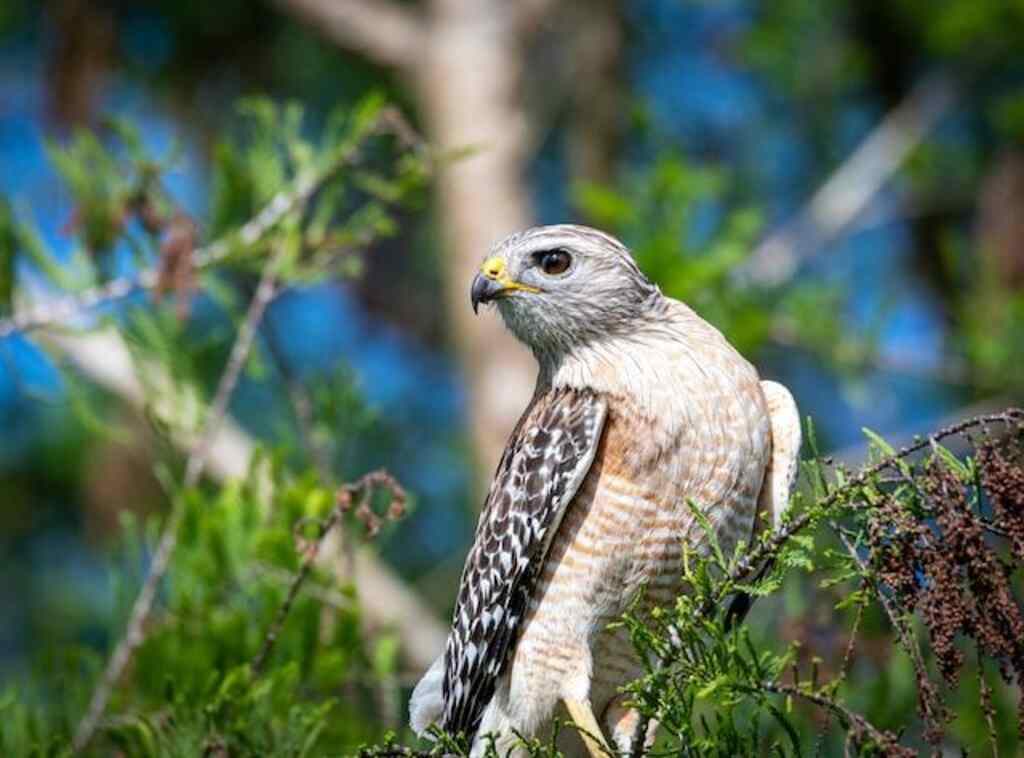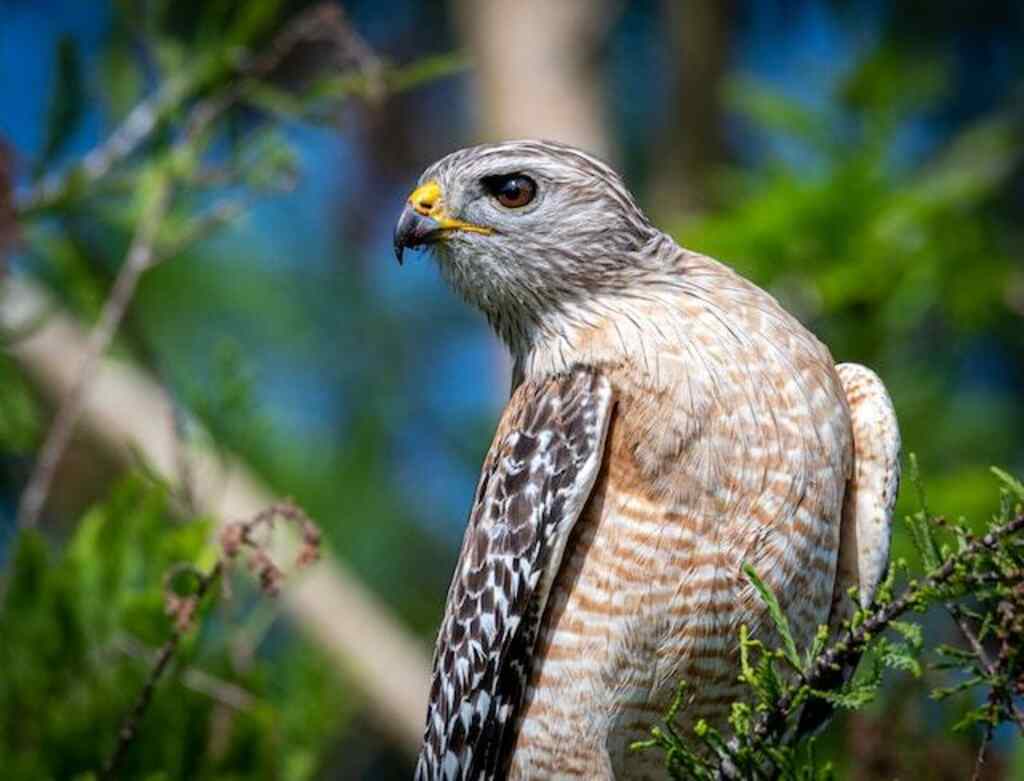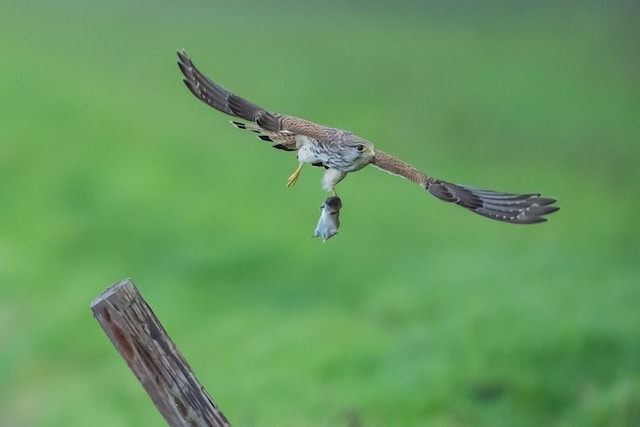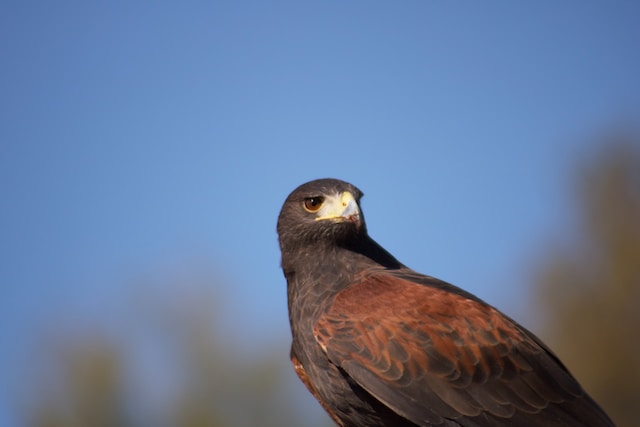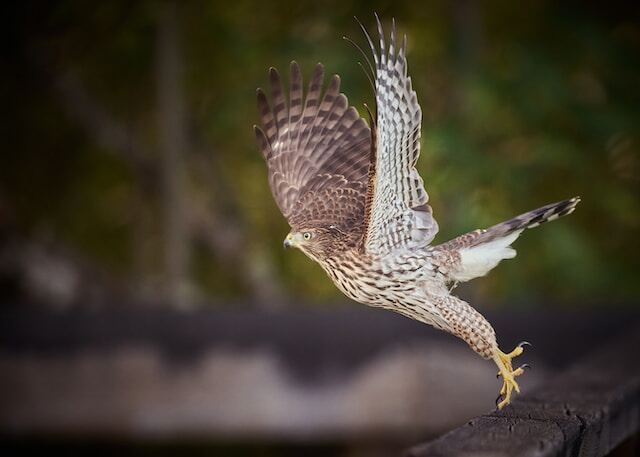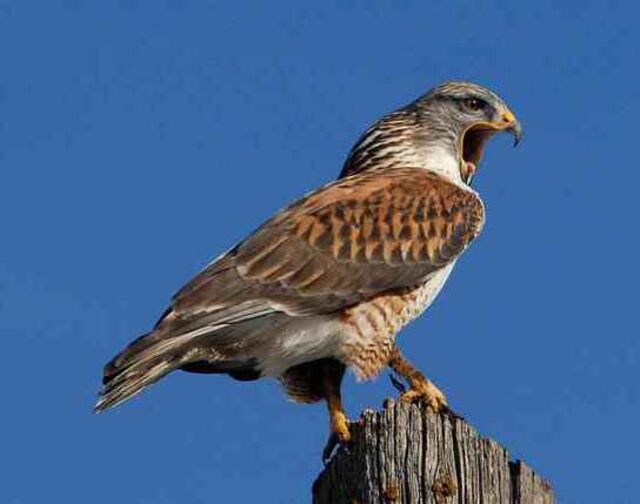Do Hawks Eat Rats? Unveiling the Truth! Brace yourself for a feathered frenzy as we dive into the captivating world of hawks and their mysterious culinary choices.
So, here’s the scoop: the short answer is YES! But why should you stick around?
Prepare to be enthralled by the fascinating details of hawk behavior, the secret lives of rats, and the surprising role these creatures play in pest control. Get ready to soar into an eye-opening adventure!
Table of Contents
- 1 The Mighty Predator: Hawks
- 2 Do Hawks Eat Rats?
- 3 Importance of Understanding the Food Habits of Hawks
- 4 The Predatory Nature of Hawks
- 5 The Diet of Hawks
- 6 Rats as Prey for Hawks
- 7 The Role of Hawks in Controlling Rat Populations
- 8 Conclusion
- 9 FAQs: Do Hawks Eat Rats?
- 9.1 Do hawks really eat rats?
- 9.2 Are rats a staple food source for hawks?
- 9.3 Why do hawks hunt rats?
- 9.4 What other animals do hawks prey on?
- 9.5 How do hawks catch and kill rats?
- 9.6 Do all hawk species eat rats?
- 9.7 Can hawks help control rat populations?
- 9.8 Are rats nutritious for hawks?
- 9.9 Do hawks prefer other types of prey over rats?
- 9.10 How do hawks contribute to ecosystems by hunting rats?
- 10 Author
The Mighty Predator: Hawks
Hawks are magnificent birds of prey that have been subject to human fascination for centuries. They are known for their keen eyesight, swift flight, sharp talons, and powerful beaks.
Hawks belong to the family Accipitridae, which is made up of over 200 species of birds of prey.
These birds inhabit almost all parts of the world, from North America to Africa and Asia.
As predators, hawks play an important role in maintaining a healthy ecosystem by keeping populations of other animals in check.
They hunt during the day and can spot their prey from high altitudes using their excellent vision. Once they spot their prey, they dive down at incredible speeds to catch it with their sharp talons.
Do Hawks Eat Rats?
Rats are a common household pest that causes damage by gnawing on everything from wires to furniture.
They can also cause diseases such as Hantavirus and Salmonella in humans. Therefore, it is essential to control rat populations effectively.
Since hawks are predatory animals that hunt smaller mammals and rodents; many people wonder if they feed on rats as part of their diet.
While hawks have been observed hunting rats in some cases, it is not a staple food source for them.
Importance of Understanding the Food Habits of Hawks
Understanding what hawks eat is not only important for bird enthusiasts, but also critical for researchers interested in studying ecosystems’ dynamics.
As predators at the top of the food chain, hawks play an essential role in controlling populations’ sizes below them.
By knowing what types of animals, hawks prefer hunting and eating during different times throughout the year or under varying weather conditions; researchers can create models aimed at predicting population cycles.
These models help understand how changes within ecosystems affect predator-prey relationships; thus providing valuable insights into how ecosystems work.
The Predatory Nature of Hawks
Hawks are opportunistic hunters that use a wide range of strategies to catch their prey. They have sharp talons, which they use to catch and hold onto animals while simultaneously biting them with their sharp beaks.
The bite is usually aimed at the spinal cord or neck region, resulting in immediate paralysis.
Since hawks are diurnal creatures that hunt during the day, they rely heavily on their eyesight to spot prey.
Depending on the species, hawks can see up to eight times better than humans and can detect ultraviolet light.
This ability makes it easier for them to spot small rodents moving on the ground from high altitudes.
Understanding the food habits of hawks is essential for researchers interested in studying ecosystem dynamics and controlling pests like rats.
Although rats are not a staple food source for hawks, they have been observed hunting them in some cases.
Hawks’ predatory nature plays an important role in keeping populations of other animals in check and maintaining healthy ecosystems as top predators.
The Diet of Hawks
Hawks are a predatory bird that are known to have a diverse diet. They are opportunistic hunters, which means that they will consume any prey that is readily available and within their hunting range.
The diet of hawks can vary depending on the species and their location, but they all share certain dietary characteristics.
General Diet of Hawks
Hawks primarily prey on small mammals such as rodents, rabbits, and squirrels. However, they also feed on birds, reptiles, insects, fish, and even other raptors. A hawk’s diet may change based on the season or availability of food in their habitat.
For example, during the winter months, when small mammals may be scarce or difficult to hunt due to snow cover or other factors.
Hawks are also known for their ability to adapt their hunting strategies based on the type of prey they are targeting.
For example, when hunting birds in flight, hawks may use their speed and agility to chase down the prey from above.
When targeting small mammals on the ground, hawks will often perch in trees or other high vantage points to watch for movement below before swooping down for an attack.
Types of Prey Commonly Hunted by Hawks
Rodents such as mice and rats make up a significant portion of a hawk’s diet. This is because rodents reproduce quickly and have high population densities in urban areas, where hawks often hunt.
Other common types of prey hunted by hawks include rabbits and squirrels, which make up a significant portion of a hawk’s diet in wooded areas or parks with lots of trees, where these animals can be found easily by hawks flying at low altitudes.
Hawk’s diets vary around North America; some species such as red-tailed hawks prefer snakes for their diets. Red-shouldered hawks consume a lot of amphibians like frogs, salamanders and crayfish.
Factors that Influence a Hawk’s Choice of Prey
There are several factors that can influence which prey a hawk will choose to hunt. One of the main factors is the availability of food in their habitat.
Hawks will often prey on animals that are abundant in their environment, as they are easier to catch.
The size and strength of the hawk also play an important role in determining its hunting strategies and preferred prey.
Larger hawks such as the red-tailed hawk may be able to take down larger prey like rabbits or squirrels while smaller species may target smaller animals like mice or insects.
The time of day can also impact a hawk’s choice of prey.
Some species, such as the northern harrier, prefer to hunt during daylight hours while others, such as the great horned owl, may hunt at night.
Overall, understanding the diverse diet and hunting strategies of hawks is crucial for researchers and bird enthusiasts alike who want to learn more about these fascinating predators.
Rats as Prey for Hawks
Characteristics of rats that make them attractive to hawks
Hawks are birds of prey that hunt using their sharp talons and beaks. They have a diverse diet that consists of different types of prey, including small animals like rodents.
Rats are particularly attractive to hawks because they are easy to catch, and they provide a lot of nutrients for the predator.
Rats are also abundant in urban and suburban areas, making them easy targets for hawks looking for food.
One characteristic that makes rats a suitable prey is their size. Most rat species are relatively small, making them an ideal meal for hawks.
Additionally, rats are slow-moving animals that often scavenge in open areas, increasing their chances of being spotted by a hawk hunting from above. Another characteristic is the nutritional value of rats.
Despite being viewed as pests, rats provide essential nutrients like protein and fats, which are vital for the growth and survival of hawks.
This makes rats an important source of food during breeding season or when other prey is scarce.
Instances where rats have been observed as prey for hawks
There have been many recorded instances where hawks have been observed preying on rats in both urban and rural environments.
For example, Red-tailed Hawks (Buteo jamaicensis) commonly hunt rodents like mice and voles, but also consume larger rodents such as rats when available.
Other hawk species like Cooper’s Hawk (Accipiter cooperii) and Sharp-shinned Hawk (Accipiter striatus) can be observed hunting smaller-sized rodents, but may also hunt larger ones if necessary.
Studies have shown that hawk populations tend to increase when there is an abundance of rodents available in their environment, since it increases their chances of finding food quickly with less energy expended.
How rats fit into a hawk’s overall diet
Although hawks consume a variety of prey, rats can play a significant role in their diet. Rats provide a good source of protein and fat, which is essential for their survival.
In the wild, hawks will hunt and consume whatever prey is available to them, including rats. Rats also help balance the hawk’s diet by providing nutrients that may be lacking in other prey.
Depending on the region and season, other prey may not be readily available to hawks. In such cases, rats can serve as an important food source that allows hawks to survive until other prey becomes available.
While rats are not the sole food source for hawks, they play an important role in their diet since they are abundant and easy targets.
Rats offer essential nutrients that help hawks survive during difficult times when other prey may be scarce.
The Role of Hawks in Controlling Rat Populations
Importance of controlling rat populations
Rats are known to be pests and can cause damage to homes, buildings, crops and even transmit diseases. Their presence can have a negative impact on the environment as well.
Controlling rat populations is essential to avoid these negative consequences.
There are different methods of controlling rats, including poison baits, traps and biological control methods such as using predators.
How hawks can help control rat populations
Hawks are known for their predatory behavior and can play an important role in controlling rat populations.
As natural predators, hawks can hunt and kill rats effectively without causing harm to humans or other animals.
They are also able to navigate through tight spaces easily, which makes them particularly effective at hunting rats in urban areas.
One study conducted by researchers at Fordham University found that the presence of red-tailed hawks helped reduce the number of rats in New York City parks by up to 32%.
This demonstrates the effectiveness of using hawks to control rat populations.
Examples from studies and observations on the effectiveness of using hawks to control rat populations
Several studies have been conducted on the effectiveness of using hawks as biological control agents for controlling rats. In one study conducted in California, researchers released barn owls into an area infested with rodents, including rats.
The results showed that the population of rodents decreased significantly after only six months, with a 70% reduction in the number of rats observed.
Another study conducted by researchers at San Diego State University found that using Harris’s hawks was an effective method for reducing rodent populations in urban areas.
The researchers monitored two sites – one site where no predator was present and another site where Harris’s hawks were present – over a period of two years.
They found that there was a significant reduction in the number of rodents, including rats, at the site where hawks were present.
Conclusion
While hawks have a diverse diet that includes a variety of prey such as rodents, birds, insects, and even snakes and lizards.
The question of whether or not hawks eat rats has been answered with a resounding yes. Rats are indeed part of the prey that hawks hunt for in the wild.
Understanding the food habits of hawks is important not only for wildlife enthusiasts but also for pest control experts who want to manage rodent populations effectively.
As we have seen earlier in this article, hawks play an integral role in controlling rat populations through their hunting behavior.
Summary on whether or not do Hawks eat Rats
Hunting small mammals and rodents like rats is an essential part of most hawk’s diet. These birds have powerful talons that allow them to capture and kill prey with ease.
While rats may not be the first choice for most hawk species, they are certainly one of many potential food sources that these birds will readily target when other options are unavailable.
Rats are particularly attractive to hawks because they are abundant in many urban and suburban areas where these birds frequently hunt.
As opportunistic predators, hawks will take advantage of any available prey items, including rats if given the opportunity.
The importance and relevance to understand the food habits and role in controlling pests
Understanding the dietary preferences of hawks can be an important tool for pest control professionals seeking sustainable and humane approaches to managing rodent populations.
Instead of relying on poisons or traps that can harm other wildlife species and pets, using natural predators like hawks can provide a more effective solution to pest management issues.
In addition to their practical benefits as pest controllers, studying raptor diets also provides valuable insights into predator-prey relationships within local ecosystems.
By understanding the complex interactions between animals at different levels of the food chain, we can develop a deeper appreciation for the intricate balance of nature and our role in preserving it.
The relationship between hawks and rats is just one example of how seemingly disparate species can have an important impact on each other’s survival.
As we continue to learn more about these vital connections, we can better appreciate the importance of protecting our natural world and working towards a more sustainable future.
FAQs: Do Hawks Eat Rats?
Do hawks really eat rats?
Yes, hawks do eat rats. While rats may not be their primary choice of prey, hawks will readily target and consume rats when other options are scarce.
Are rats a staple food source for hawks?
No, rats are not a staple food source for hawks. Hawks have a diverse diet that includes various prey such as rodents, birds, insects, and even snakes and lizards.
Why do hawks hunt rats?
Hawks hunt rats because they are abundant in many urban and suburban areas where hawks frequently hunt. Rats are easy targets and provide a good source of nutrients for the predator.
What other animals do hawks prey on?
Hawks prey on a variety of animals, including small mammals like rodents, rabbits, and squirrels. They also feed on birds, reptiles, insects, fish, and even other raptors.
How do hawks catch and kill rats?
Hawks catch and kill rats using their sharp talons and beaks. They have powerful talons that allow them to capture and hold onto their prey while simultaneously biting them with their sharp beaks.
Do all hawk species eat rats?
While not all hawk species eat rats, many species have been observed hunting and consuming rats. Some species, like the Red-tailed Hawk, commonly hunt rodents including rats.
Can hawks help control rat populations?
Yes, hawks can play an important role in controlling rat populations. As natural predators, they can effectively hunt and kill rats without causing harm to humans or other animals.
Are rats nutritious for hawks?
Rats provide essential nutrients like protein and fats, which are vital for the growth and survival of hawks. They serve as an important food source, especially during breeding seasons or when other prey is scarce.
Do hawks prefer other types of prey over rats?
Hawks have a diverse diet and may prefer certain types of prey depending on the species and their habitat. While rats are part of their prey, hawks may prioritize other prey items based on availability.
How do hawks contribute to ecosystems by hunting rats?
By hunting rats, hawks help control rat populations, which can cause damage to property, crops, and spread diseases. Their predatory behavior maintains a balance in ecosystems and contributes to overall ecosystem health.

